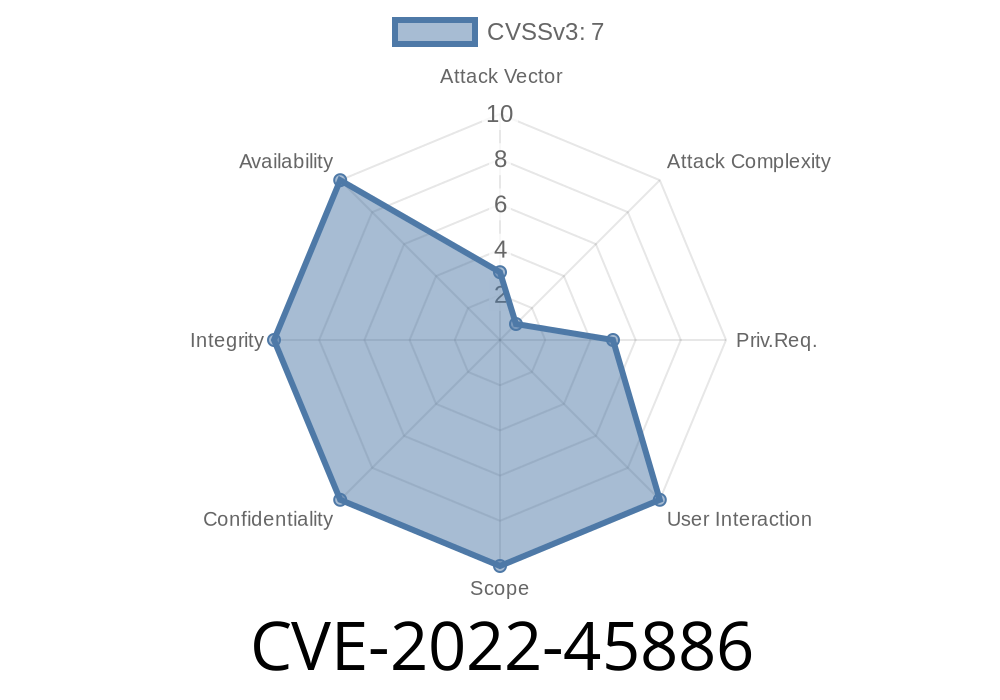A recently discovered vulnerability, tagged as CVE-2022-45886, exposes an issue in the Linux kernel versions up to 6..9, specifically affecting the drivers/media/dvb-core/dvb_net.c component. This vulnerability allows a race condition situation between the .disconnect and dvb_device_open functions, ultimately leading to a use-after-free scenario. In this article, we'll cover an in-depth understanding of the vulnerability, illustrate code snippets, provide links to original references and exploit details, and discuss how to safeguard your Linux systems against this security risk.
Background and Vulnerability Details
The Linux kernel serves as the core operating system component that manages hardware resources, system calls, and inter-process communication. In particular, the Digital Video Broadcast (DVB) subsystem present in the kernel consists of drivers and interfaces for transmission and reception of media content using DVB standards. The vulnerability discovered in the kernel affects the mentioned component - specifically dvb_net.c, which is responsible for the DVB network transport layer.
The issue arises due to a race condition between the .disconnect and dvb_device_open functions. Race conditions occur when multiple threads or processes access shared resources without synchronization, leading to unexpected and undesirable behavior. In this case, it results in a use-after-free scenario, where memory has been freed while still being accessed by a pointer within the function.
Here's the related code snippet from the Linux kernel's dvb_net.c
static int dvb_device_open(struct inode *inode, struct file *file)
{
...
mutex_unlock(&dvbdev->mutex);
if (err) {
dvb_usercopy(file, NULL, , (unsigned long) , , -1);
dvbdev->users--;
}
/* The line below accesses a pointer (adev) already freed */
err = dvbdev->fops->open(inode, file);
return err;
}
In the highlighted line, the code tries to access the freed pointer adev, resulting in a use-after-free situation.
Exploit Details and Implications
Exploiting this vulnerability allows an attacker to gain unauthorized access, tamper with data or cause a denial of service by triggering the race condition and accessing memory that’s already been freed. This could lead to system crashes, data corruption, and overall instability.
It's essential to understand that race conditions like these are non-deterministic and stand as considerable security risks. These can be challenging to detect and reproduce reliably, thus requiring adequate security measures to prevent exploitation.
Links to Original References
To learn more about the vulnerability and its technical aspects, consider referring to the following links:
1. Linux kernel source code: https://git.kernel.org/pub/scm/linux/kernel/git/torvalds/linux.git/tree/drivers/media/dvb-core/dvb_net.c?id=refs/tags/v6..9
2. CVE details: https://nvd.nist.gov/vuln/detail/CVE-2022-45886
3. Linux kernel mailing list: https://lore.kernel.org/all/20210825153202.3150879-1-j.filippobosi@gmail.com/
Securing Your System
Applying patches and updates as they become available is the most effective way to ensure that your systems remain protected. Keep track of security advisories and follow the best practices for securing Linux systems, including:
Monitoring system logs for unusual behavior
It's essential to be proactive in maintaining your system security and mitigating potential threats.
Conclusion
CVE-2022-45886 is a critical vulnerability impacting Linux kernel versions through 6..9, exposing systems to potential unauthorized access, data tampering, and denial of service attacks. By understanding the issue and taking the recommended steps, you can ensure protection against this significant security risk in your Linux systems.
Timeline
Published on: 11/25/2022 04:15:00 UTC
Last modified on: 01/20/2023 20:19:00 UTC
